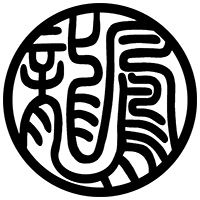The term "Soke" (宗家) has gained attention recently, and this article aims to clarify the confusion surrounding this designation.
To understand what Soke means, we first need to discuss the Koseki (戸籍) system in Japan. Koseki, or Koseki Tohon (戸籍謄本), refers to a family registry that records vital statistics for each household. Japanese law mandates that each family maintains their own Koseki, which includes information such as marriages, divorces, children (including non-marital children), adoptions, and property. When significant changes occur, the head of the household must update the Koseki at the municipal authority.
The Koseki dates back to the 6th century, originally known as "kogo no nenjaku" (庚午年籍), primarily serving census purposes. The modern Koseki system was established in 1872 and remains in use today.
In this context, the Soke is typically the spouse or first child responsible for updating the Koseki information if the primary individuals listed pass away. The Soke also handles property tax and inheritance matters. Japanese law has specific provisions dedicated to inheritance, governed by the nationality of the deceased person. Simply put, if the deceased is a Japanese national, Japanese laws will dictate the inheritance process. Conversely, if they have become a citizen of another country, that country's laws may apply. If no heir is designated in the Koseki, Japanese inheritance law determines the order of succession, usually starting with the spouse followed by the children. If a couple has no children, they can adopt someone, often a niece or nephew, to act as their designated heir.
Now, how does Soke function in the martial arts? In Japan, a Soke inherits the rights to a martial arts style upon the death of a family member who either founded the style (called Kaiso) or was a previous Soke (head of household/inheritor). Typically, the Soke is a blood relative of the style's founder. For example, in Gojuryu Karate, the founder Miyagi Chojun was the Kaiso for Gojuryu, and his son, Miyagi Takashi, was designated as Soke through the Koseki and Japanese inheritance law. When Miyagi Takashi sensei passed away, his son, Miyagi Toru, became the Soke following the same processes.
If an individual is not listed on the Koseki or in a legal will (which can be an exception to the Koseki in Japan), they cannot inherit from the family. In such cases, the local municipality may absorb the assets if no blood relative is found.
In the Western world, there is often confusion regarding the term Soke; many mistakenly believe it refers to the founder of a style. However, this is incorrect - the Soke is an inheritor, not a founder. The title of a founder is Kaiso. Outside Japan, the term Soke is not used appropriately since most countries do not have a family registry system. Anyone claiming to be a Soke must be able to show that they are listed on a Japanese family Koseki as the legal heir; otherwise, their claim lacks legitimacy.
Chibariyo!
Scot
|

